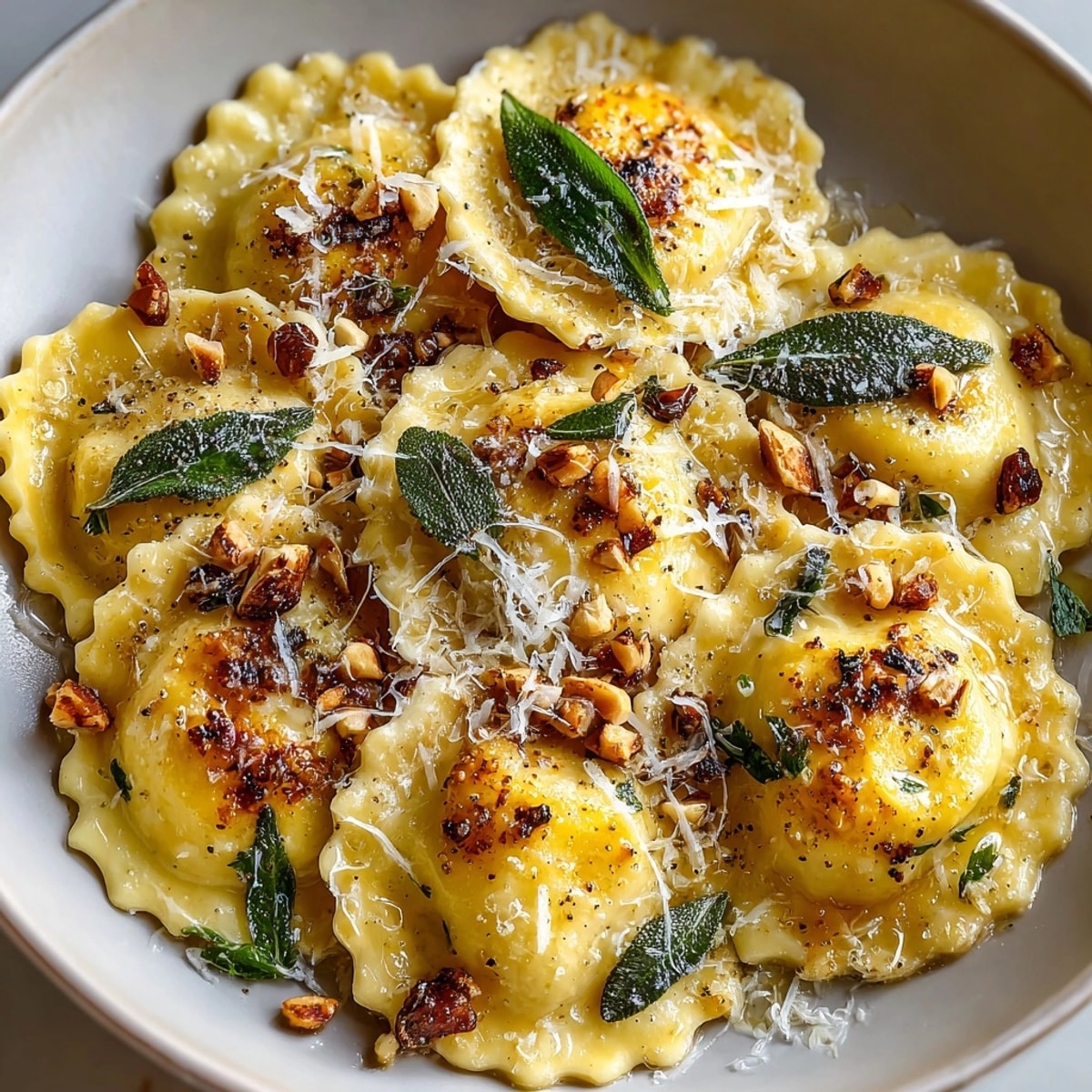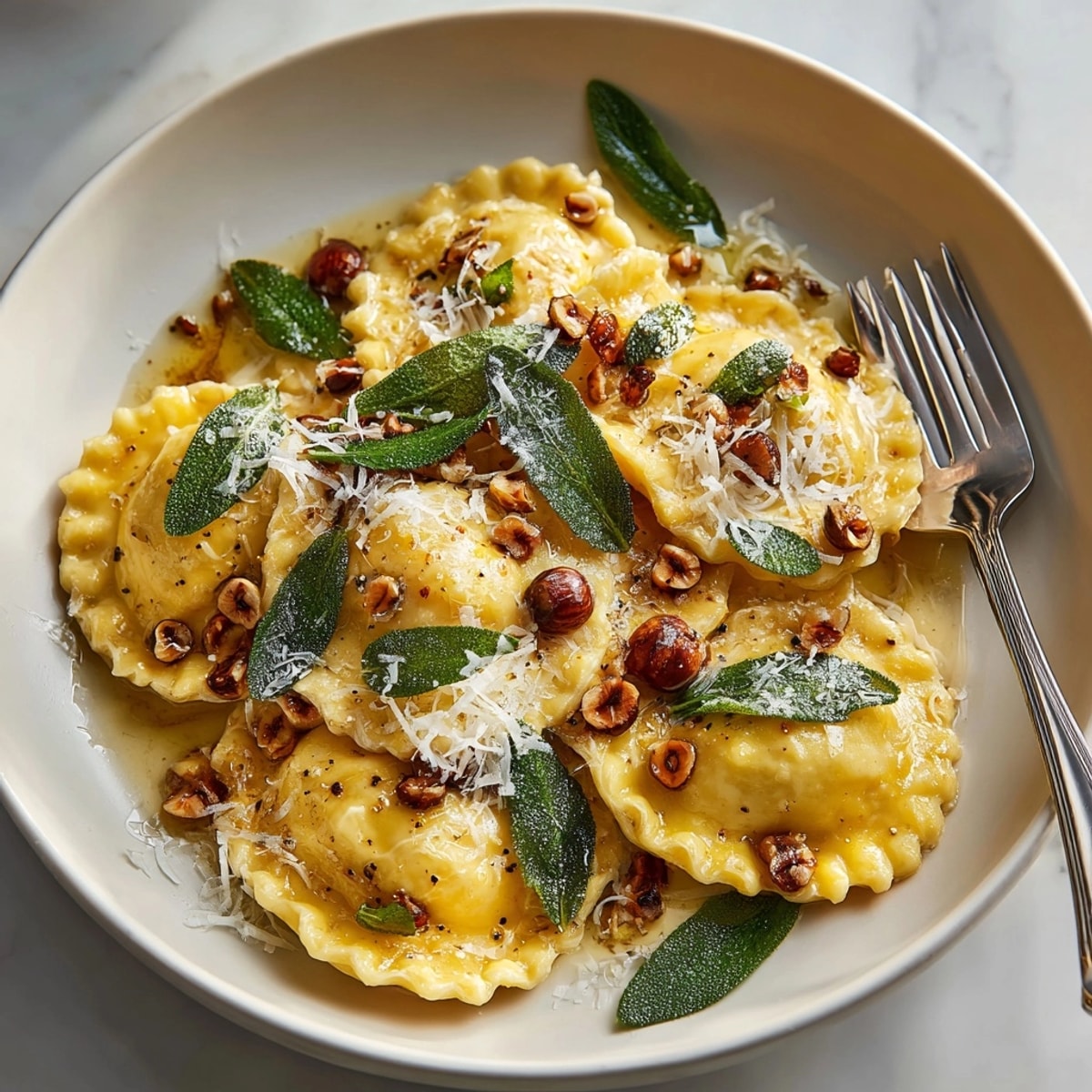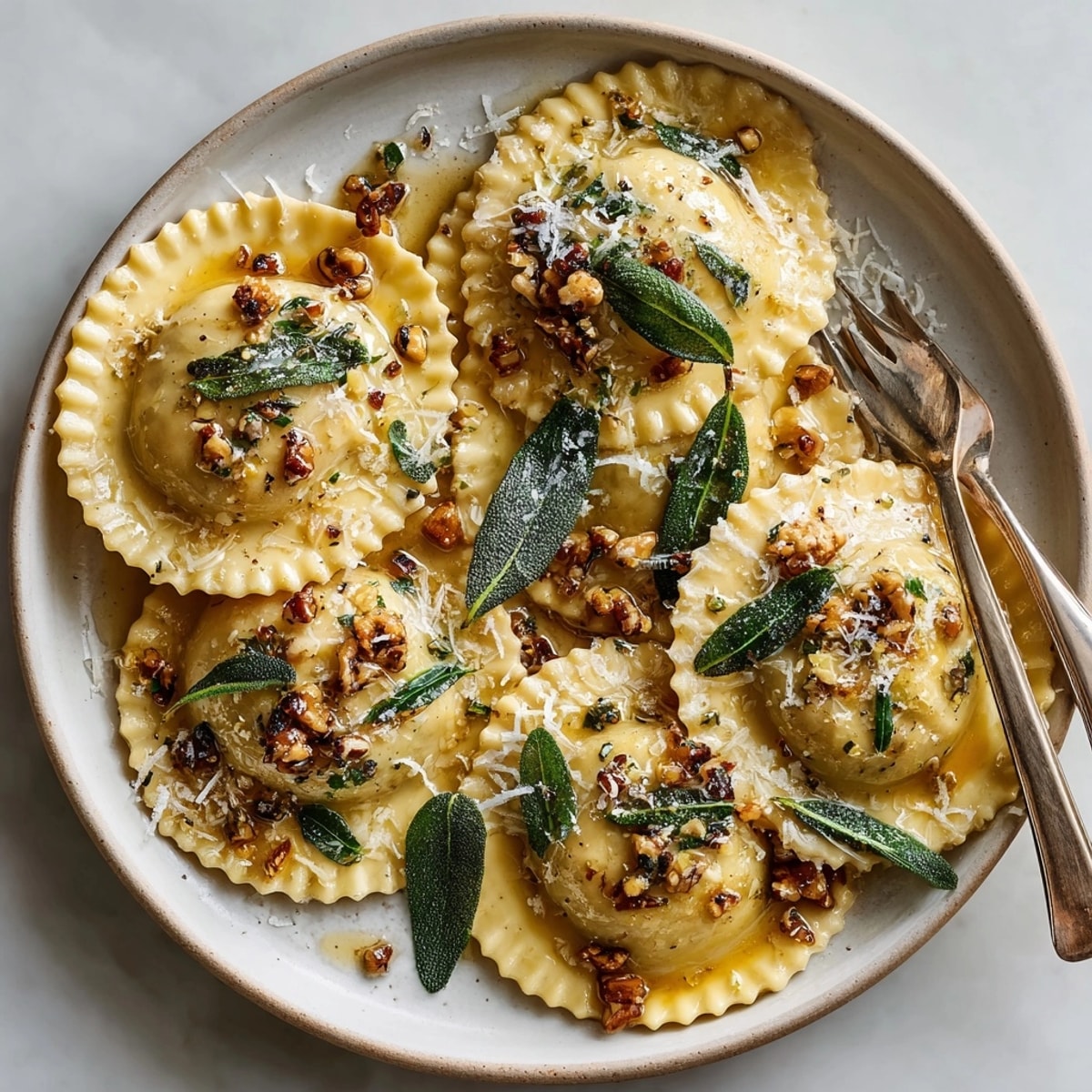 Save
Save This pillowy acorn squash ravioli recipe transforms simple ingredients into restaurant-quality pasta at home. The sweet roasted squash filling pairs perfectly with the nutty brown butter sauce, creating a dish that feels special enough for celebrations yet doable for a weekend cooking project.
I first made this ravioli during a cooking class in Florence, and it's become my signature dish for autumn dinner parties. The combination of toasted hazelnuts and sage brings me right back to that Tuscan kitchen every time.
Ingredients
- All purpose flour: provides the perfect texture for homemade pasta dough that's tender yet sturdy enough to hold the filling
- Fresh eggs: bind the dough and add richness to the pasta
- Acorn squash: offers naturally sweet flavor and velvety texture when roasted
- Ricotta cheese: adds creaminess and lightness to balance the squash
- Parmesan cheese: brings savory depth and umami to the filling
- Fresh nutmeg: enhances the squash's natural sweetness without overpowering
- Unsalted butter: forms the base of our sauce allowing control over saltiness
- Hazelnuts: provide essential crunch and toasty flavor
- Fresh sage leaves: infuse the brown butter with aromatic herbaceous notes
- Lemon zest: brightens the rich sauce with subtle citrus notes
Instructions
- Roast The Squash:
- Halve your acorn squash and remove seeds before brushing with olive oil. Place cut side down on a baking sheet and roast at 400°F for about 30 minutes until the flesh yields easily when pierced with a fork. The caramelization that happens during roasting concentrates the squash's natural sweetness.
- Prepare The Filling:
- Scoop the cooled squash flesh into a bowl and mash thoroughly to remove any stringy bits. Add ricotta, grated Parmesan, nutmeg, salt and pepper, then mix until completely smooth. Taste and adjust seasonings if needed. The filling should be thick enough to hold its shape on a spoon.
- Make The Pasta Dough:
- Create a flour well on a clean countertop and add eggs, salt, and olive oil to the center. Use a fork to gradually incorporate flour from the inner walls until a shaggy dough forms. Switch to kneading by hand, working the dough for a full 10 minutes until it becomes smooth and elastic. This develops the gluten structure for perfect pasta texture.
- Rest The Dough:
- Wrap your kneaded dough tightly in plastic wrap and allow it to rest for 30 minutes at room temperature. This crucial step allows the gluten to relax, making the dough easier to roll and preventing tough pasta.
- Roll The Pasta:
- Divide your rested dough in half and roll each piece on a lightly floured surface until you can almost see your hand through it, about 1/16 inch thickness. Keep remaining dough covered while working to prevent drying. For consistent results, roll from the center outward, rotating the dough frequently.
- Form The Ravioli:
- Place teaspoons of filling along one pasta sheet, leaving generous space between each mound. Lightly brush water around the filling, then carefully lay the second sheet on top. Press firmly around each mound to seal, removing air pockets as you go. Cut into squares with a knife or ravioli cutter.
- Cook The Pasta:
- Bring a large pot of heavily salted water to a rolling boil. Work in batches, gently dropping in ravioli and cooking just 2 to 3 minutes until they float to the surface. Overcrowding will cause them to stick together.
- Make Brown Butter Sauce:
- While pasta cooks, melt butter in a skillet over medium heat. Add hazelnuts and sage leaves, then swirl the pan continuously as the butter foams, then subsides. Watch carefully as the milk solids turn golden brown and develop a nutty aroma. Remove from heat immediately and stir in lemon zest.
- Finish And Serve:
- Use a slotted spoon to transfer cooked ravioli directly to plates. Spoon the hazelnut brown butter sauce generously over each serving. Finish with freshly shaved Parmesan and additional chopped hazelnuts if desired.
 Save
Save The fresh sage is truly the secret ingredient in this recipe. I grow it in my garden and have found that slightly larger, mature leaves actually crisp up beautifully in the brown butter, adding textural contrast and intensifying their flavor. My Italian grandmother always said sage and winter squash were meant for each other, and this recipe proves her wisdom.
Make Ahead Tips
You can prepare components of this dish in advance to make assembly easier. The filling can be made up to two days ahead and stored in an airtight container in the refrigerator. The pasta dough can be prepared a day ahead and kept wrapped in plastic in the refrigerator. Just bring it to room temperature for about 30 minutes before rolling. Assembled uncooked ravioli can be frozen on a baking sheet, then transferred to freezer bags for up to a month. Cook directly from frozen, adding 1 to 2 minutes to the cooking time.
Perfect Pairings
This rich pasta dish pairs beautifully with a simple arugula salad dressed with lemon vinaigrette to cut through the richness. For wine, choose something with bright acidity like a Pinot Grigio or unoaked Chardonnay. The slight bitterness of roasted Brussels sprouts also complements the sweet squash filling nicely. For a complete dinner party menu, start with an antipasto platter and finish with poached pears for dessert.
Troubleshooting Your Ravioli
If your pasta dough feels too dry, add water a teaspoon at a time until it comes together. Conversely, if it's too sticky, dust with small amounts of flour while kneading. When sealing ravioli, press firmly from the filling outward to remove air pockets that could cause them to burst during cooking. If your ravioli do tear during cooking, don't worry. The filling will still be delicious mixed with the sauce.
 Save
Save Seasonal Adaptations
Switch acorn squash for pumpkin in October for a Halloween dinner party. Try sweet potato filling during winter holidays with added warming spices. Spring version works beautifully with fresh peas and mint instead of sage.
Enjoy this delightful homemade ravioli as a comforting and impressive meal. It’s perfect for a cozy autumn evening or a special occasion.
Recipe FAQ
- → Can butternut squash be used instead of acorn squash?
Yes, butternut squash offers a similar sweetness and texture and makes an excellent substitute for acorn squash.
- → How can I achieve the best pasta dough texture?
Knead the dough until smooth and elastic, and allow it to rest so the gluten relaxes for easy rolling.
- → Do I need a pasta machine to roll the dough?
No, you can use a rolling pin; just aim for very thin sheets, about 1/16 inch thick, for delicate pasta.
- → What is the key to a flavorful brown butter sauce?
Let butter cook until golden and aromatic, then add toasted hazelnuts and fresh sage for deep, nutty flavor.
- → How do I prevent ravioli from sticking together?
Cook them in batches in plenty of salted water and transfer with a slotted spoon to avoid sticking.
- → What wine pairs well with this dish?
A crisp white wine like Pinot Grigio or Sauvignon Blanc complements the flavors and richness wonderfully.